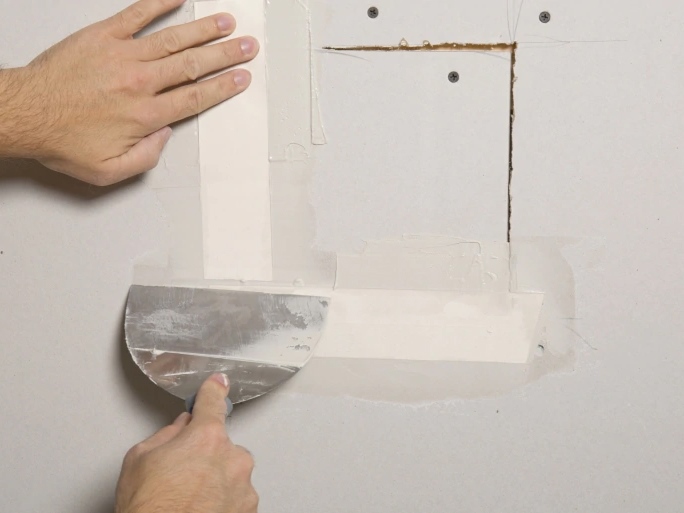Comprehensive Drywall Contractor Assistance for New Builds
Comprehensive Drywall Contractor Assistance for New Builds
Blog Article
Drywall Installation Facilitated: Tips for Perfect Outcomes
Drywall installment is frequently regarded as a difficult job, yet with the ideal technique and understanding, it can end up being a manageable endeavor. Grasping methods for cutting, hanging, and completing drywall can significantly influence the result.
Choosing the Right Products
Selecting the suitable products for drywall setup is vital to accomplishing a resilient and cosmetically pleasing coating. sheetrock repair fort worth. The main part, drywall sheets, normally come in numerous densities, with 1/2-inch sheets being standard for indoor walls. For areas needing additional moisture resistance, such as cooking areas or bathrooms, think about using green board or cement board, which are specifically made to hold up against humidity

Additionally, picking the best fasteners-- either screws or nails-- is important for safeguarding the drywall to the framing. Drywall screws are typically preferred for their holding power and decreased risk of popping. Consider the finishing touches such as guide and paint, which not only boost the look yet likewise protect the drywall from wetness and wear.
Preparing the Installment Location
Prior to starting the drywall installation process, it is necessary to prepare the installation area completely. A tidy work area minimizes the threat of damage to existing things and enables for efficient activity during installation.
Next, inspect the wall surfaces and ceiling for any flaws, such as splits, openings, or mold and mildew. Address these concerns ahead of time; spot any type of problems and allow sufficient time for fixings to completely dry. Additionally, ensure that electric outlets, switches, and pipes are properly placed and accounted for, as this will impact drywall positioning.
Take into consideration the ecological problems also. A stable temperature and moisture degree are important for optimum adhesion and efficiency of the drywall products. If necessary, use a dehumidifier or heater to develop ideal problems.
Cutting and Hanging Drywall
The key to efficient drywall setup exists in the precise cutting and hanging of the panels. Utilize a straight edge and an utility knife to score the drywall along your dimensions, then snap it along the racked up line for a clean break.

Always function from the top down and delegated right, guaranteeing that you keep a staggered pattern to boost stability. Correctly hanging the drywall sets the structure for a smooth coating, ultimately causing exceptional results in your drywall project.
Taping and Mudding Strategies
While appropriate cutting and hanging of drywall sets the stage, the following essential step includes mastering taping and mudding strategies to ensure a seamless finish. Insulation is vital for reinforcing joints and protecting against splits; it entails embedding tape into the applied joint substance (mud) Start with a high quality fiberglass or paper tape, applying the tape over the joint and pushing it into the wet mud making use of a taping blade, making sure no air bubbles continue to be.
As soon as the tape remains in location, apply a slim layer of joint compound over the tape, feathering the edges to produce a smooth transition to the drywall surface. Allow this layer to dry completely before sanding it gently to eliminate flaws. Repeat this process, applying additional layers of mud as essential-- normally two to three layers-- while gradually broadening the application area from this source with each layer to attain a smooth look.
After the final layer dries out, sand the surface area with a fine-grit sandpaper until smooth. drywall installation. Bear in mind to wear a mask during sanding to stay clear of breathing in dust bits. Mastering these taping and mudding techniques is crucial for achieving a professional-quality coating in your drywall installation
Completing Touches for Perfection
Achieving a perfect drywall installment surpasses mudding and taping; it culminates in the finishing touches that raise the total look. These final actions are important in guaranteeing a professional-grade surface that enhances the visual appeals of your area.
Begin by fining sand the dried out joint substance to develop a smooth surface. Utilize a fine-grit sandpaper and a sanding block or post sander for optimal control. Pay certain interest to edges and corners, as these locations have a tendency to require more careful work. After sanding, wipe down the walls with a damp cloth to eliminate any type of dust particles, making certain a clean surface for paint.
Next, apply a primer specifically created for drywall. This action is crucial, as it aids seal the joint compound and supplies a consistent base for the overcoat. Once the guide dries, examine for any kind of blemishes, and repair as needed.
Verdict
In conclusion, successful drywall installment pivots on the Recommended Site mindful selection of products, thorough site web prep work of the setup location, and accurate execution of cutting and hanging methods. Proficiency of taping and mudding procedures is important for attaining a smooth coating.
Drywall installation is typically viewed as a complicated job, yet with the appropriate technique and knowledge, it can come to be a workable undertaking.Picking the proper materials for drywall installment is vital to achieving a durable and visually pleasing surface.Before beginning the drywall setup procedure, it is vital to prepare the setup area extensively. Mastering these taping and mudding strategies is essential for achieving a professional-quality coating in your drywall installment.
In final thought, successful drywall installation pivots on the mindful option of products, thorough preparation of the installment location, and specific implementation of cutting and hanging methods.
Report this page